Writing the Results
Think of the story you want to tell. Choose and present only those results that are relevant to your hypothesis. A morass of experimental results unilluminated by a hypothesis and unembellished by a discussion is insulting and confusing to your reader. from “How to Write a Thesis”
Results are the ultimate objective of scientific research: here you summarize the data collected and the statistical treatment of them. Therefore, this section consists of the observations and measurements recorded while conducting the procedures described in the methods section. These components must address the questions raised in the introduction and any hypotheses formulated there.
Results are often presented in numerical form and indeed are more reader-friendly if presented graphically in tables and graphs than in written text. The writer must aim for ACCURACY, INCLUSIVENESS, and SYSTEMATICITY, as these results are the primary and permanent source of scientific knowledge.
Organization should “match” that of the Methods section, if required. If the Methods section was a single, straightforward test, then the Results can follow the classic order: answer the RQ first, and arrange from most to least significant. If your Methods section was structured, consider structuring the Results section similarly. Feel free to use subheadings in the Results section. Often, this can make it somewhat easier for the reader to follow.
What to include.
– results that answer the research question (most important)
– data you can use to outline important trends
– results that you intend to address in the discussion section
– results of statistical analyses, often in conjunction with measurements analyzed
– results related to those obtained by other researchers, especially if they disconfirm other results, or are controversial
– negative results also
Example (from Rothschild, G. Nelken, I. Mizrahi, A. (2010). Functional organization and population dynamics in the mouse primary auditory cortex. Nature Neuroscience, 13, 353-360, DOI:10.1038/nn.2484 ):
To characterize the functional architecture and dynamics of local networks in A1, we performed in vivo two-photon calcium imaging in anesthetized, freely breathing mice (Fig. 1 ). We loaded cells in the auditory cortex with a mixture of Fluo-4 a.m. and SR101 using the multicell bolus loading technique 14. Fluo-4 stained neurons, astrocytes and neuropil in a spherical volume with a diameter of
250 μm. SR101 selectively stained astrocytes and diffused more readily throughout A1. Loading was optimal
40 min post injection, at which time hundreds of neurons could be detected at depths of up to 450 μm, corresponding to cortical layers 2/3 (Fig. 1a. Supplementary Movie 1 and Supplementary Fig. 1 ).
Results sections can be the most frustrating for novices to read and most interesting to experts. Consider both of these audiences when constructing the results. Clear, even redundant labeling of figures can be useful. Figure legends should stand on their own, but restricted only to the figure. The text should reference specific figures as they come up, but should not merely refer readers to a table or figure for the information; some contentful statement must be included with the reference to the figure.
Balancing the needs of both expert and non-expert readers will increase the impact of your research. (fromEnhanced heme oxygenase-mediated coronary vasodilation in Dahl salt-sensitive hypertension / ncbi.nlm.nih.gov/pubmed/14700508)
Stylistically, results can be organized in a variety of ways, and you should employ subheadings as needed. If there is only a single protocol on a non-human subjects with no control group, there may be no need for subdivisions in the results section. If there are multiple trials or multiple groups, then subheadings should be used to label what is being discussed. The organization of results most commonly “matches” the research question — groups or trials should be indicated in the last paragraph of the introduction and evident in the results section.
On the basis of these findings we hypothesized that cardiac HO-1 expression is increased in DS rats with salt-induced hypertension and provides cardioprotection by promoting coronary vasodilation. To test this hypothesis we conducted experiments using hearts isolated from DS and DR rats after 4 weeks of high or low salt diets. We examined coronary expression of HO isoforms using immunohistochemistry and studied the effects of an inhibitor of HO on coronary perfusion pressure in isolated Langendorff-hearts perfused at a constant flow rate.
– failing to integrate the graphic results into the text
– interpreting the results rather than just reporting them. Just present and report the observations and measurements, factually and informatively, without discussion.
Aims
It is important to remember that scientific inquiry is motivated by specific questions and that to write clearly you should have your question at the forefront of your mind throughout.
Allow this to guide flow of ideas on the page. Each thought should follow naturally from its precursor as you progress to an understanding of your claim and the evidence which supports it.
Who Are You Writing This Scientific Thesis For?
You cannot write a scientific report without using scientific jargon, and you should assume that your readers know as much about the discipline you are investigating as you do, but may not be as familiar as you are with the ins and outs of your particular method.
A Standard Structure
A scientific report is divided into several sections, each of which has a distinct purpose and its own tone. This forms a framework for your writing, and helps guide the flow of your ideas.
The introduction is your chance to set the particular issue of your report in its broader context. Write a few lines explaining why a particular experiment or investigation is motivated, but do not include details here.
We will investigate the effects of methane on climate change. Millions of tones of methane are released into the atmosphere every day and the potency of the effects methane as a greenhouse gas has recently been a point of some contention in the scientific community.
This will most often take the form of a hypothesis, that is a concise and, most importantly, measureable claim.
E.g. Newton’s First Law
An object at rest remains at rest and an object in motion remains in motion with the same speed and in the same direction unless acted on by a force
Sometimes you will be looking for something more quantitative, for example, in an experiment to determine the speed of light, or the thickness of a human hair.
Bear in mind that repeatability is vital ; another researcher must be able to repeat your experiment, so make sure your work is clearly documented at every stage. Do not include, any actual results, any discussion of your method, any analysis or commentary at this stage. As always when documenting what you have done, writing in the paste tense is appropriate.
Include all data which you which you collect from your procedure. This means if for example you realize that your apparatus has been malfunctioning you do not need to include these results.
Lay it out intuitively and label the tables to aid referencing later.
Your analysis goes here, but you need not include every line of algebra. Your task here is to answer the questions you asked in the introduction.
Remember
- You should consider with every sentence, who you are writing for, and what in particular you are documenting.
- That any question at the start needs an answer by the end,
- And finally, your method must be repeatable, so always clearly detail your work.
RATE THIS RESOURCE:


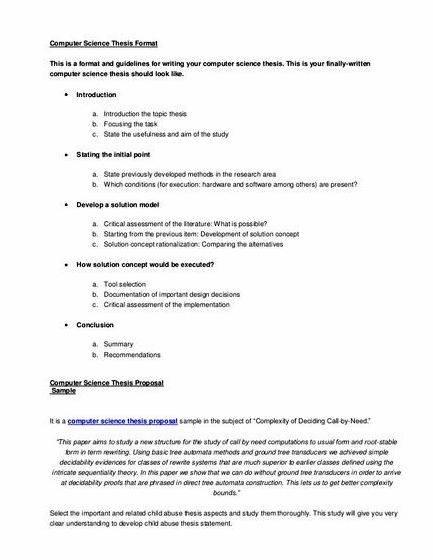

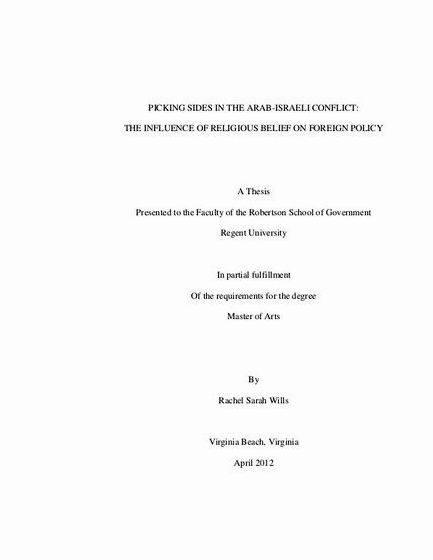

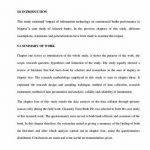 Technology introduction in thesis writing
Technology introduction in thesis writing In praise of a snails pace thesis writing
In praise of a snails pace thesis writing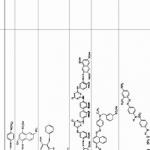 Azo dye degradation thesis writing
Azo dye degradation thesis writing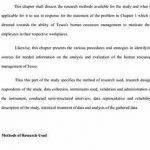 Writing research methodology for thesis
Writing research methodology for thesis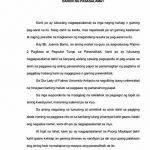 Liham pasasalamat sa thesis proposal
Liham pasasalamat sa thesis proposal






